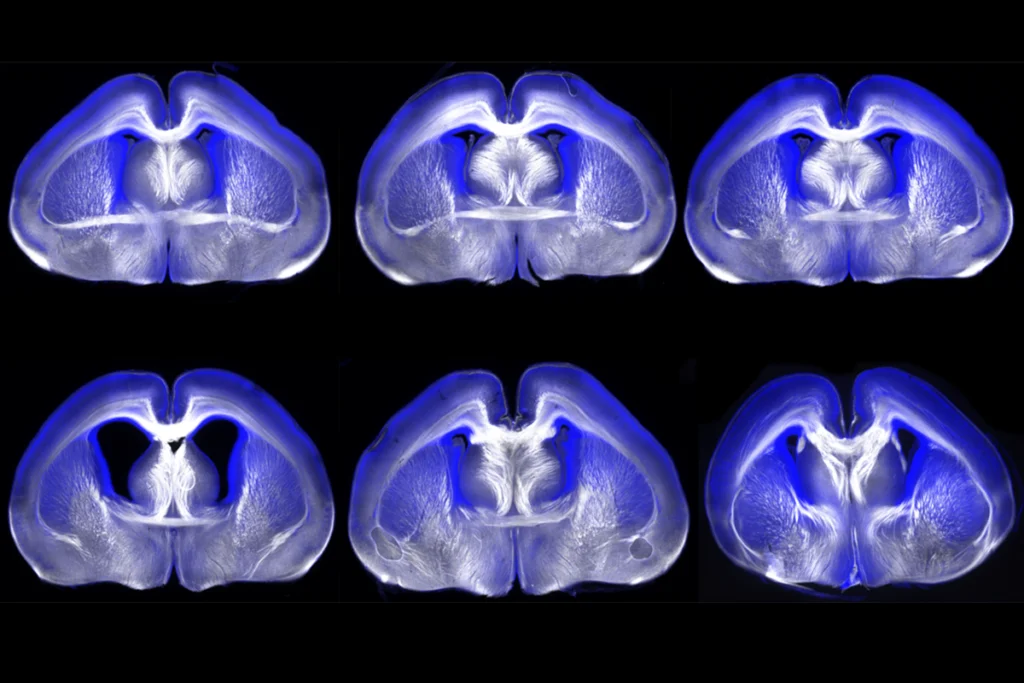Restricted and repetitive behaviors are one of autism’s hallmarks, as noted in the Diagnostic and Statistical Manual of Mental Disorders (DSM). These behaviors may manifest as repetitive movements, restricted interests, insistence on sameness, and atypical responses to sensory stimuli, according to the DSM.
But these four types of repetitive behavior described in the DSM may erroneously lump together distinct characteristics, says Mirko Uljarević, clinical assistant professor of psychiatry and behavioral sciences at Stanford University in California. “It’s really clear from our work that each of these buckets is just too heterogenous.”
In fact, insistence on sameness comprises three distinct types of behavior, Uljarević and his colleagues conclude in a study of 1,892 autistic children, published last month in Autism Research. The three types Uljarević’s team describes are routines, rituals and insistence on sameness in others’ behavior.
All three types correlate with anxiety but show distinct relationships with the youths’ other traits, sex and age, the study suggests. For example, autistic boys tend to have routines and insist on sameness in others’ behavior but lack rituals.
Spectrum spoke with Uljarević about these three subdomains, how they relate to other traits and what they mean for diagnosing and supporting autistic people.
The interview has been edited for length and clarity.
Spectrum: Why did you and your colleagues question the idea that insistence on sameness is a single subdomain of restricted interests and repetitive behaviors?
Mirko Uljarević: There was some suggestion in the previous literature that indeed insistence on sameness might encompass different, more specific facets. Emily Spackman, my collaborator on this study, has observed, for example, that many of the different behaviors within insistence on sameness occur in a social context or involve other people, such as following scripted conversations or insisting others also behave in a certain way or follow specific rules.
Another issue in the literature is that there have been a lot of inconsistent findings in terms of how behaviors are linked to other factors. Although those discrepancies can be ascribed to small sample sizes and things like that, more often than not they might also be consequences of the imprecise measures that actually lump different behaviors together.
S: How so?
MU: Most existing measures don’t really contain enough items to assess the full range of behaviors that autistic people show. For instance, a measure that provides only a total repetitive behavior score cannot distinguish between someone who has very intense special interests but does not visibly stim — meaning they do not exhibit repetitive movements — and someone who mainly has stims but does not have special interests.
The measure that we developed [and used in this study], the Dimensional Assessment of Restricted and Repetitive Behaviors (DARB), provides a detailed capture, with at least 10 items for each of the eight subdomains of repetitive behavior.
S: Can you talk a little about each of the three subdomains that emerged in your study?
MU: The ritualistic subdomain is related to needing objects in one’s environment to be arranged in a particular or “correct” manner, according to the person — for example, arranging the cushions on a couch according to certain rules. It can also mean repeating certain rituals over and over until an intrinsic sense of things being “just right” is achieved.
Routines capture behaviors that are performed in the same order each time, typically to achieve an instrumental goal. For example, a child might want to always prepare for school or bedtime in exactly the same way.
The third type, sameness focused on others, includes insisting that other people follow specific routines or rituals. For example, insisting that others say specific things or respond in a particular way during social interactions. This type is really interesting, because whereas the previous two types we can all relate to, to various degrees, this third factor is less commonly seen outside of autism.
S: How do your results compare with past findings?
MU: Studies using questionnaires with only a few items to assess special interests have reported that males show more intense special interests than females do. But using our new measure, we’ve found that males and females do not differ in terms of the sheer number or the intensity of interests; instead they differ pronouncedly in the content of the interest.
Including items that capture the full range of repetitive behaviors is therefore really crucial to ensure that we are not overlooking behaviors that, for example, are more common in autistic girls or women, which would have an impact on diagnosis and supports.
S: Do these new findings have implications for intervention?
MU: The DSM is currently collapsing behaviors into the same category when they might have different mechanisms. And if you don’t know the mechanism behind the behavior, you’re not really able to intervene properly.
For example, people who showed more sensitivity to sensory stimuli showed high levels of ritualistic sameness and routines, whereas sensory sensitivity was not linked to sameness behaviors that are focused on others. These findings have to be replicated and expanded, but one potential explanation is that people who are sensitive to sensory experiences may unconsciously use routines and organizing their environment in a particular way as a strategy to avoid distressing sensory experiences, such as loud noises or crowds.
S: What about insistence on sameness in others? What seems to be the underlying reason for this behavior?
MU: We found that social difficulties were not linked to sameness focused on others or sensory sensitivity. Behaviors in social situations may serve a different function. For example, my collaborator Emily has hypothesized that sameness behaviors involving others may have more to do with limiting unpredictability and feeling in control. Social interactions are inherently unpredictable, and they are very, very complex. Therefore, they can create a sense of anxiety in some people with autism. So people would insist on these particular scripts as a way of trying to manage and constrain that uncertainty.
That’s a really important hypothesis, but it has to be assessed further. Another explanation could be that the measure of social difficulties that we used in this study is very broad and does not assess most specific types of social difficulty.
So while I made a big point about how repetitive behaviors are broad and heterogenous, the same remark applies to social functioning. In our broader work, we have also developed a measure for capturing different aspects of social functioning, called the Stanford Social Dimensions Scale. In the future we plan to use these two comprehensive measures together.
S: How else do you hope to expand on this research?
MU: We’re planning to dig deeper into understanding the causes and purposes of repetitive behaviors and insistence on sameness. My co-author Emily has identified an unprecedented method to track and assess behaviors in real time using smartphones.
This would allow our field to answer questions such as: Are certain repetitive behaviors commonly preceded by specific events? How does engaging in repetitive behaviors affect autistic people’s mood? That’s a very novel line of work and something we’re really looking forward to doing.



